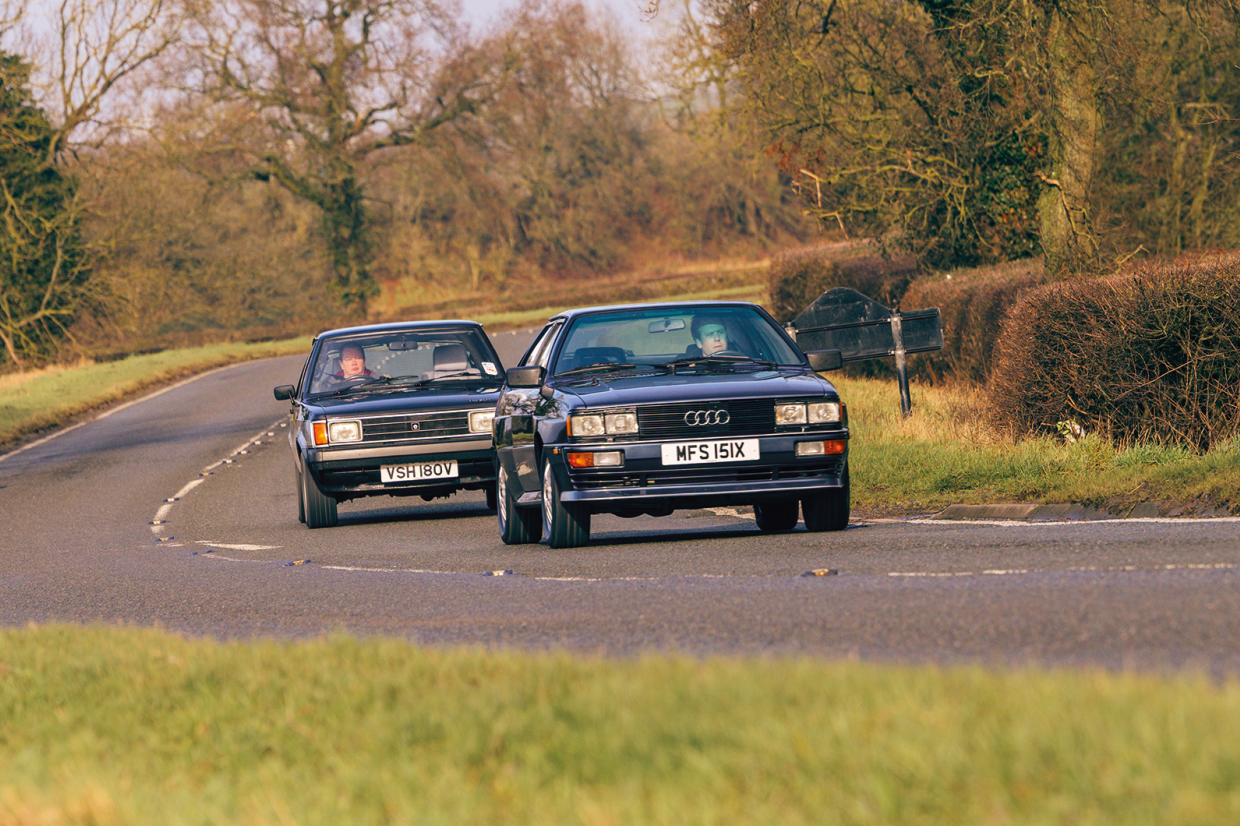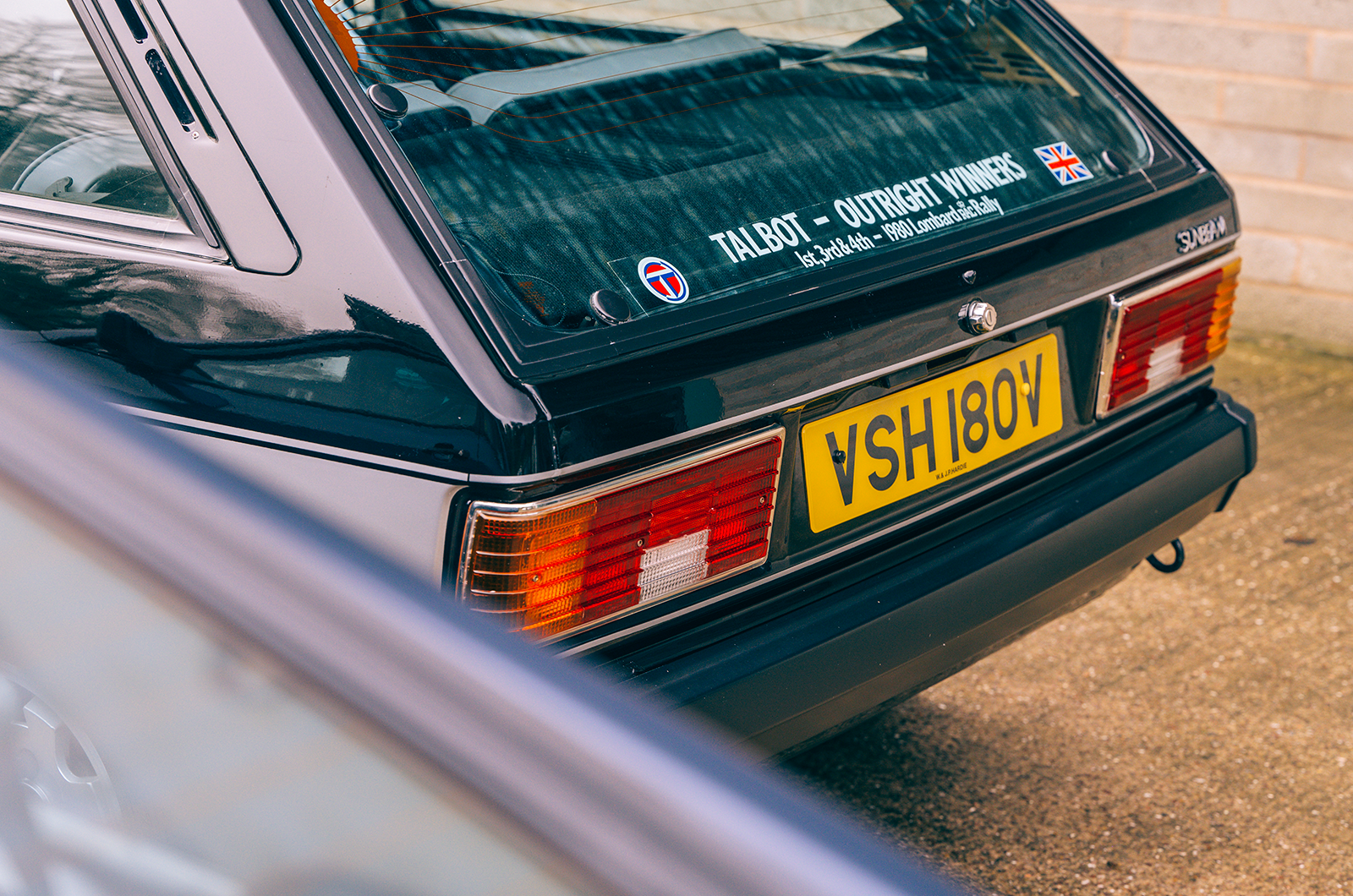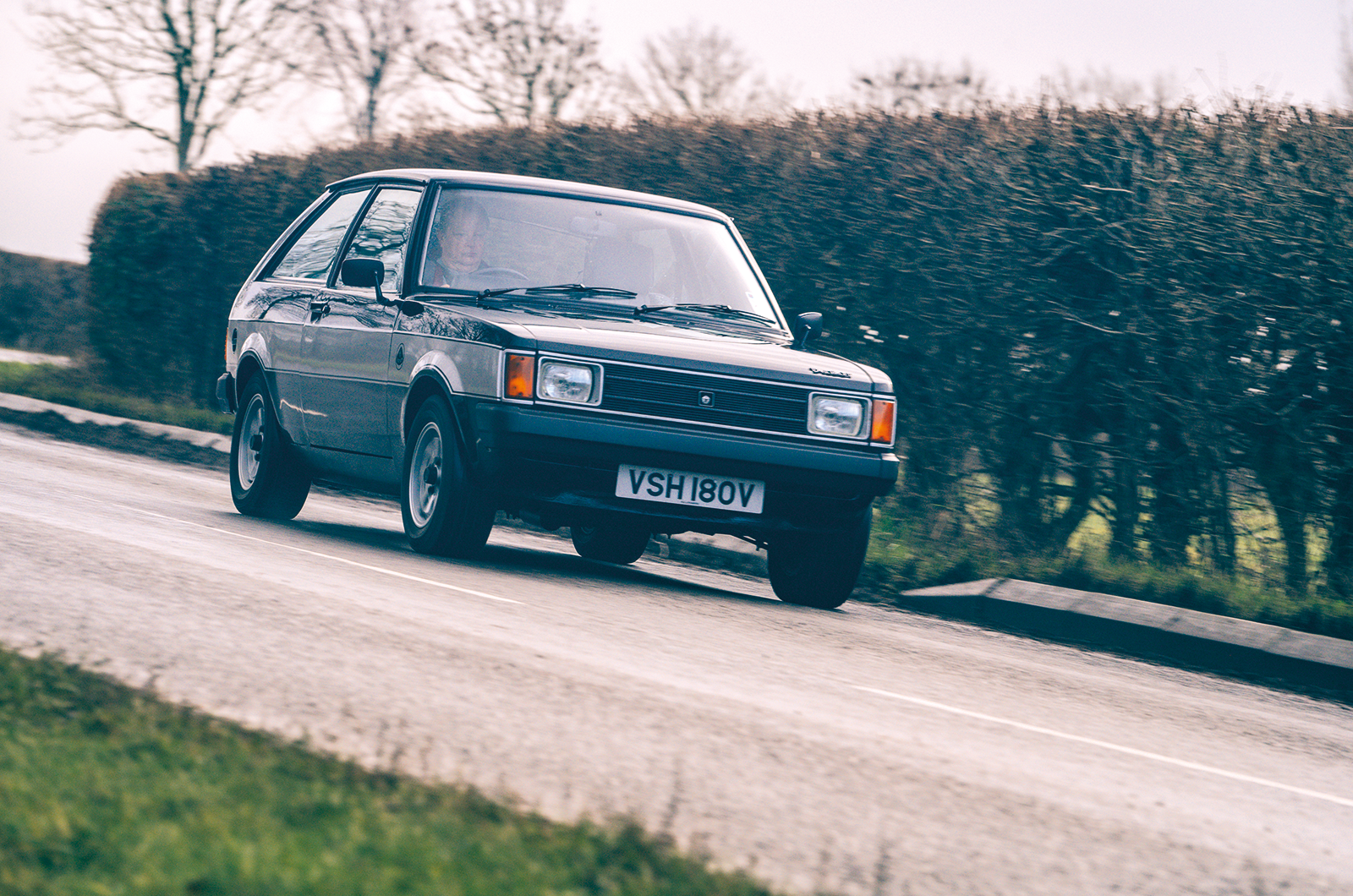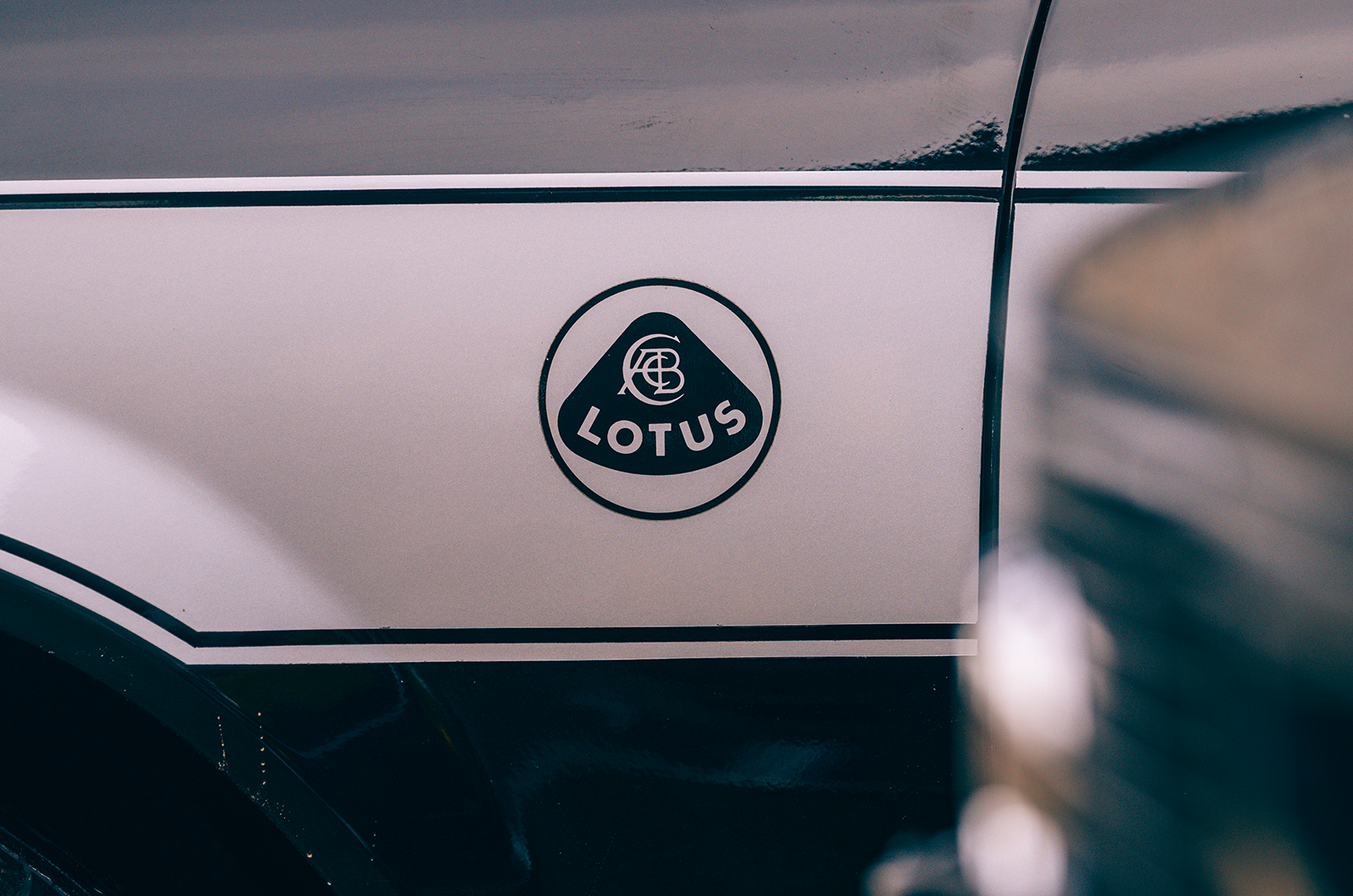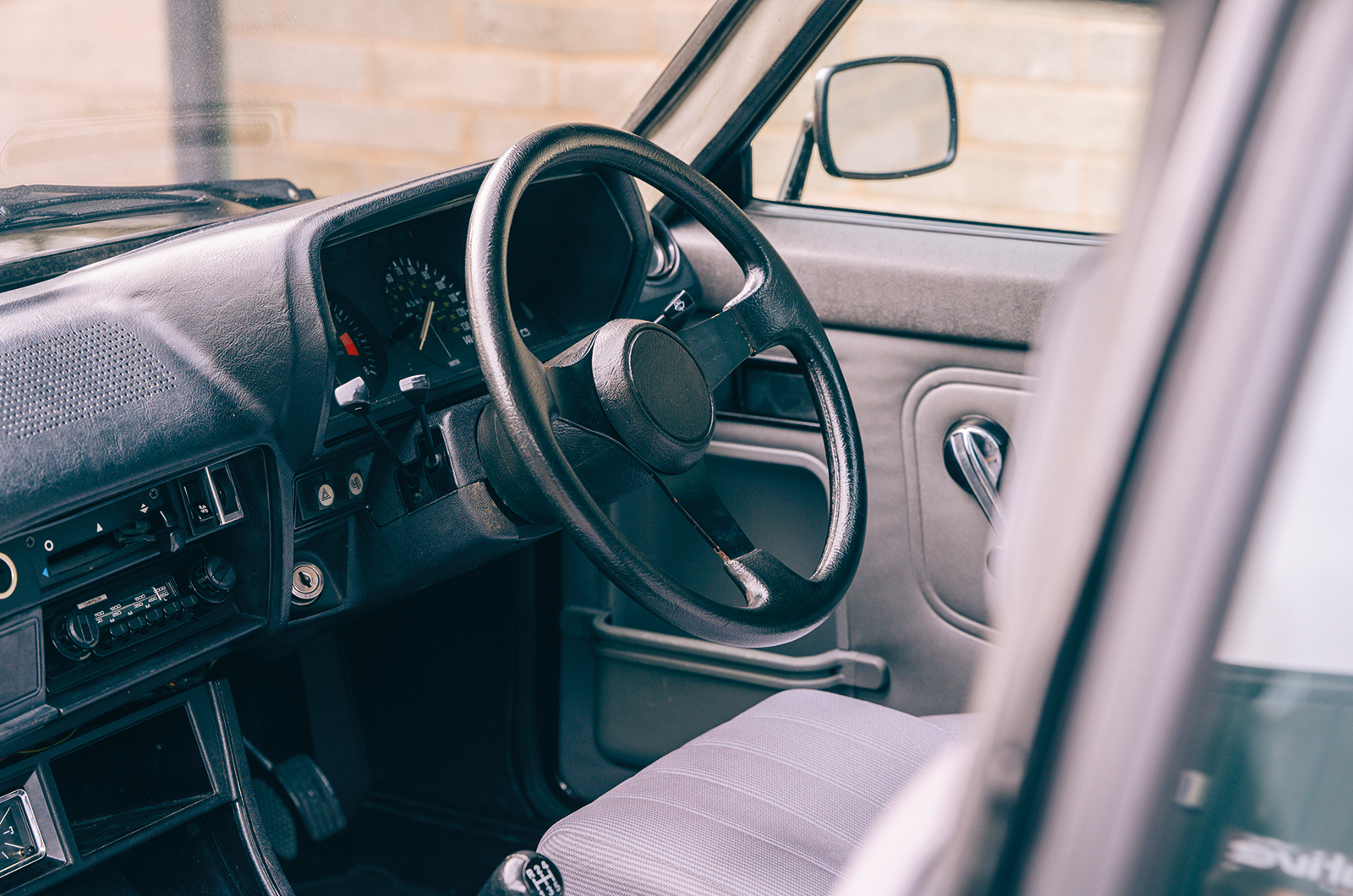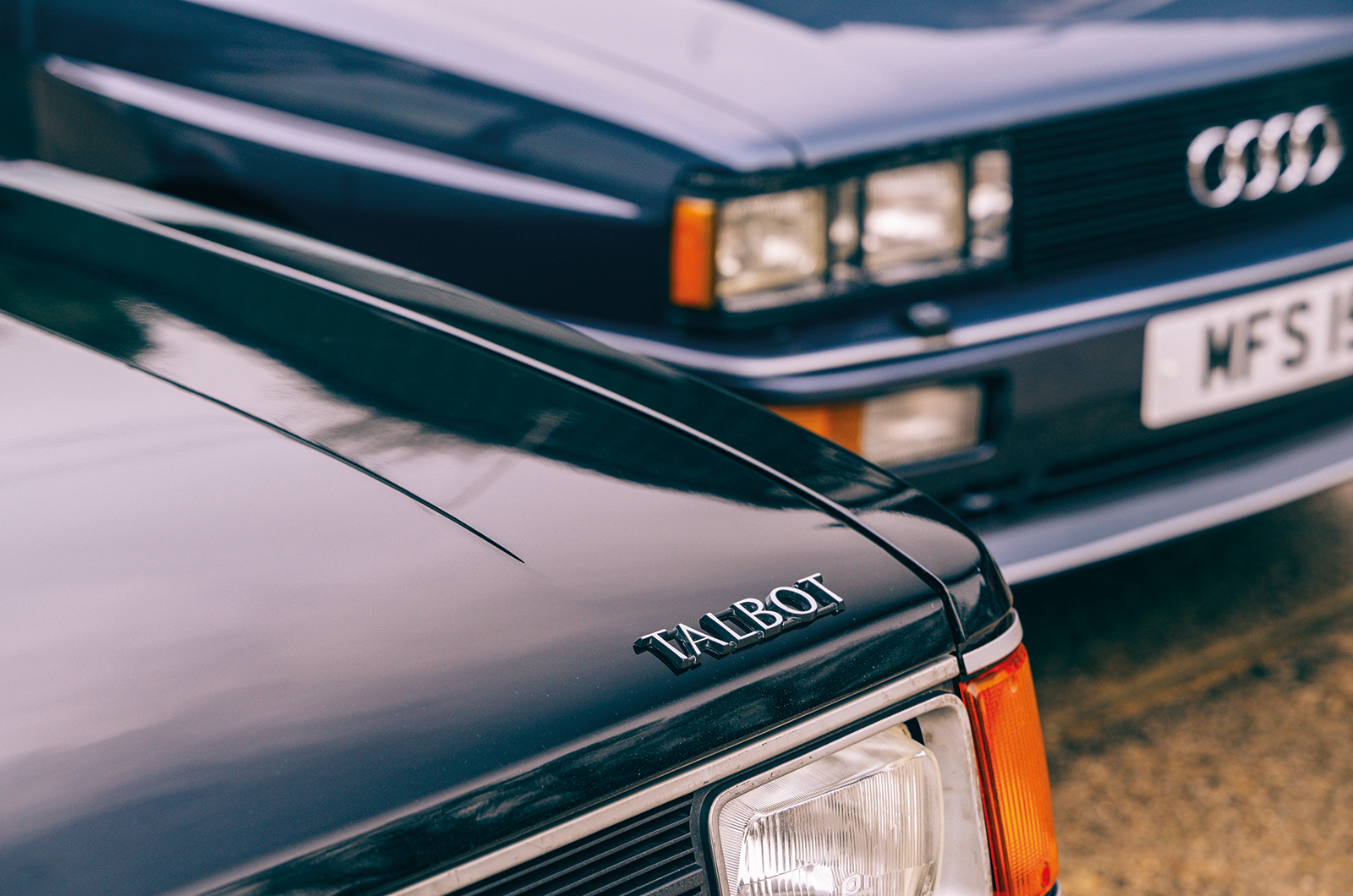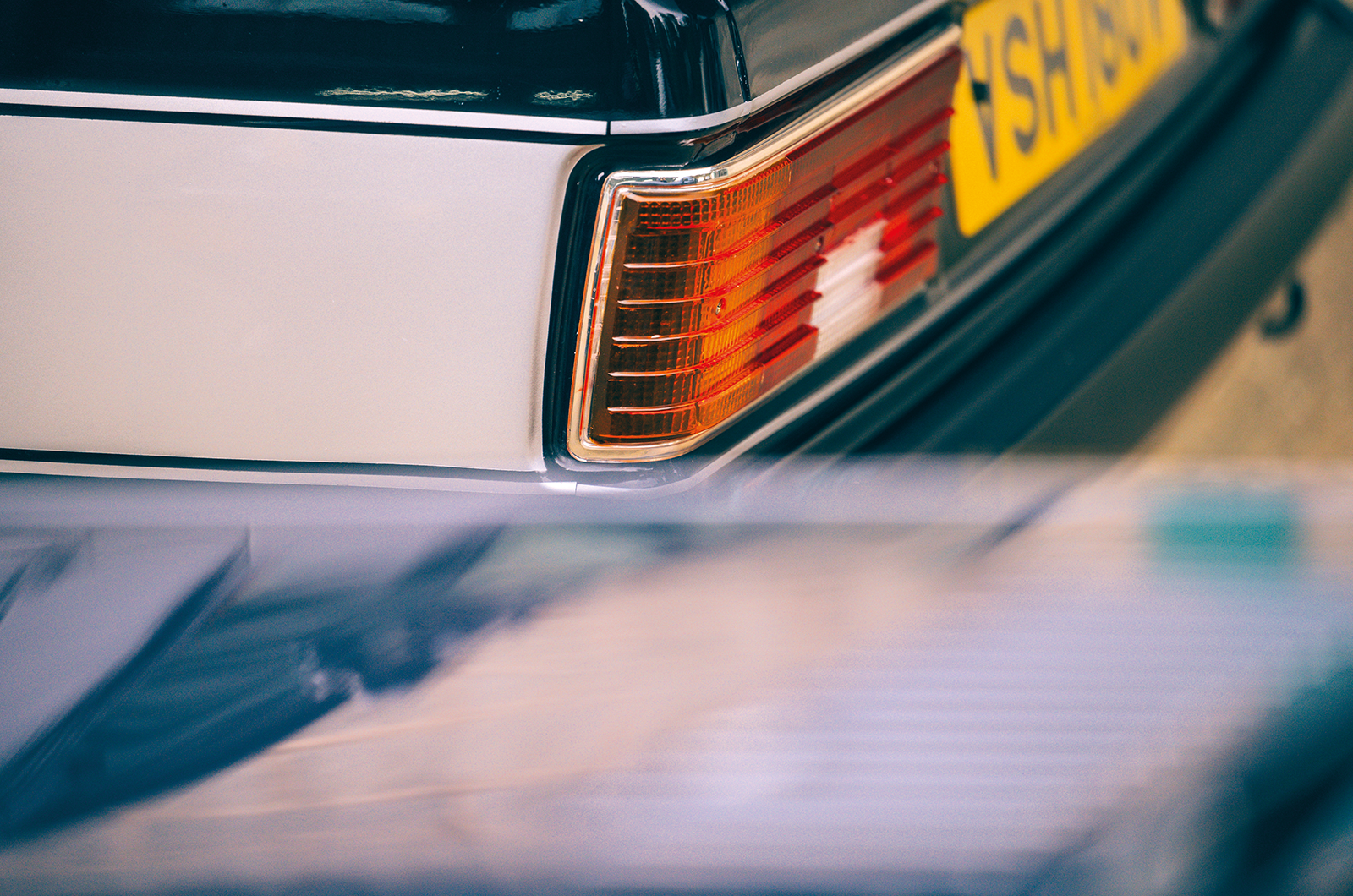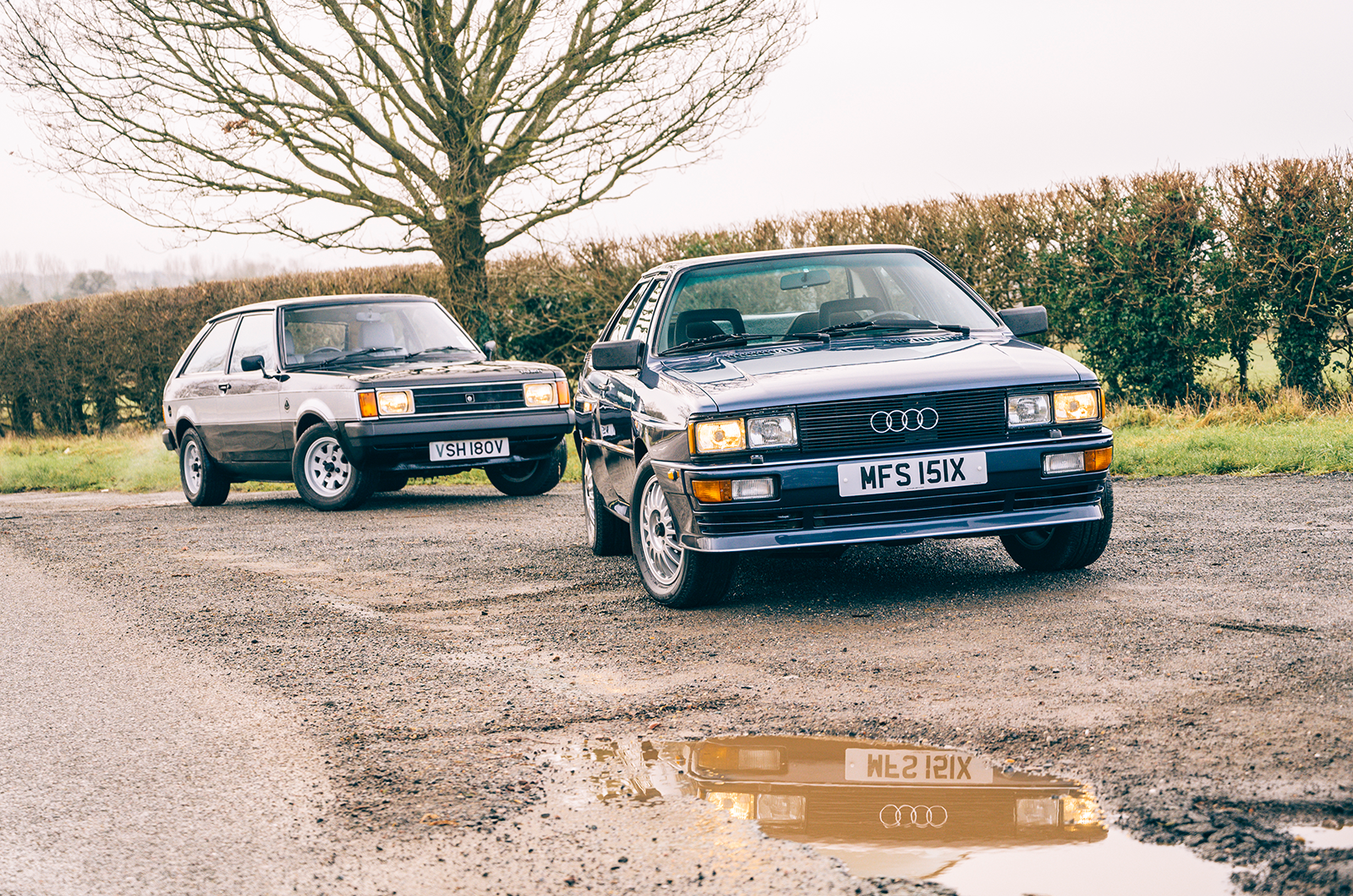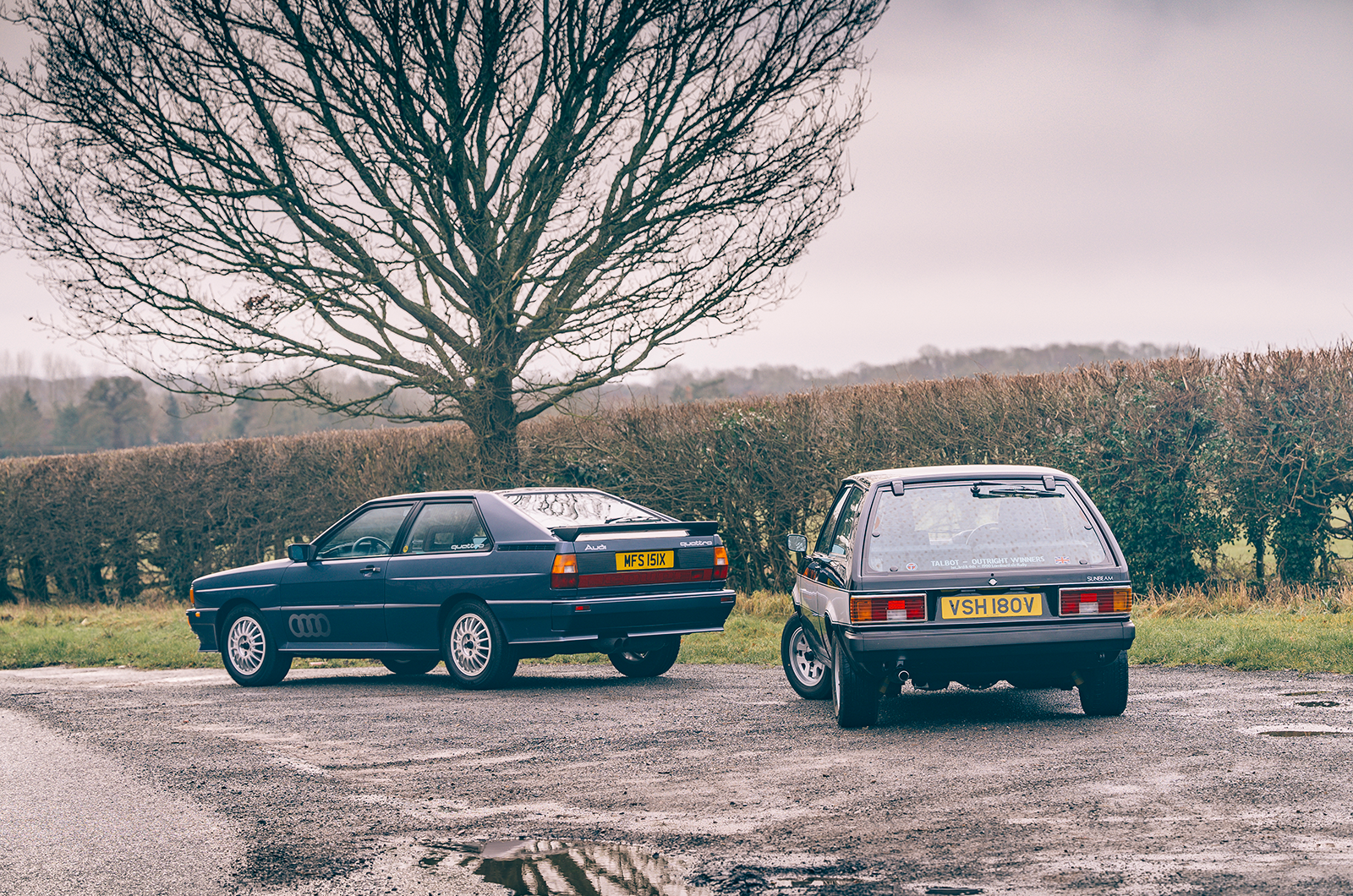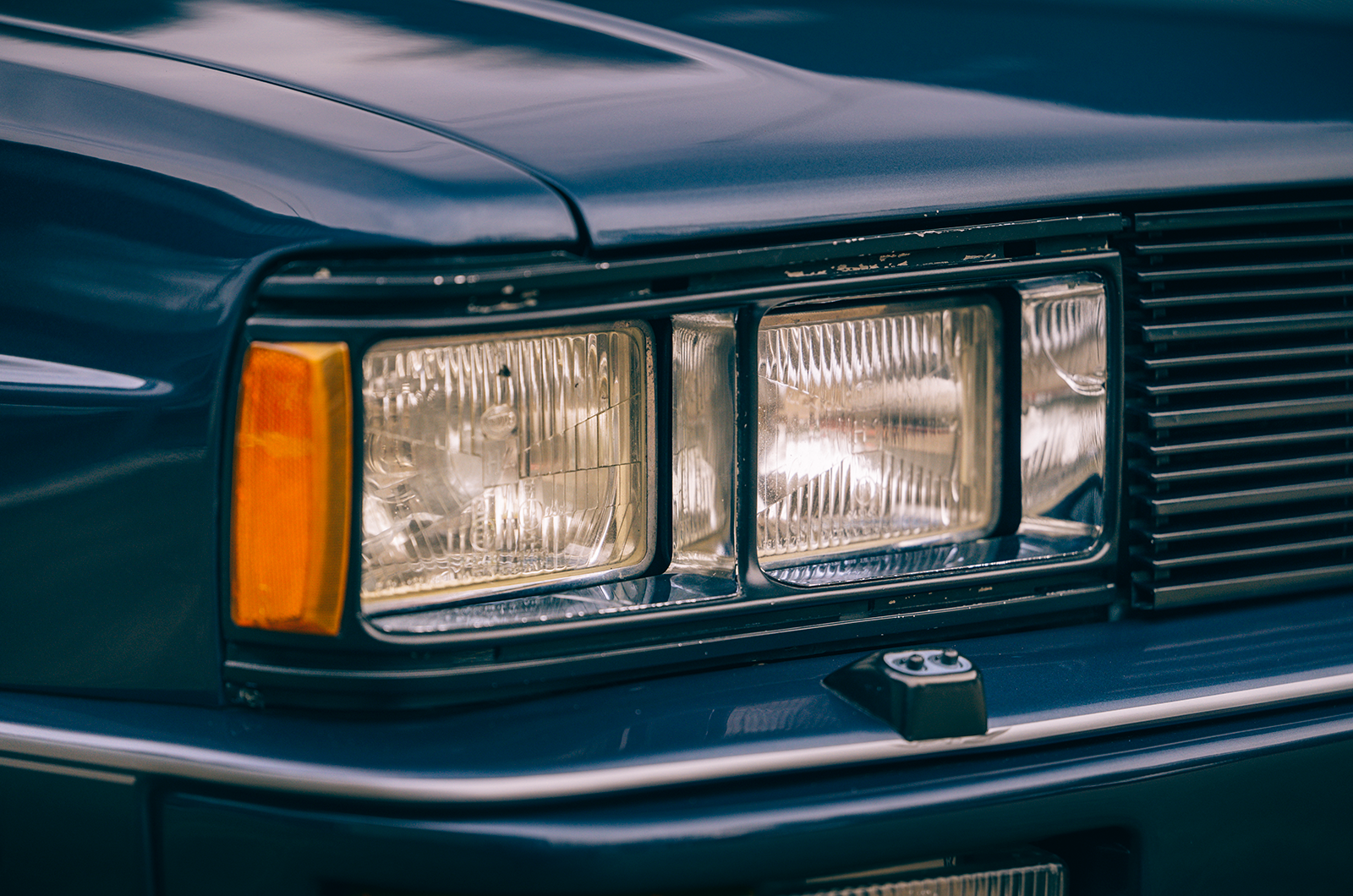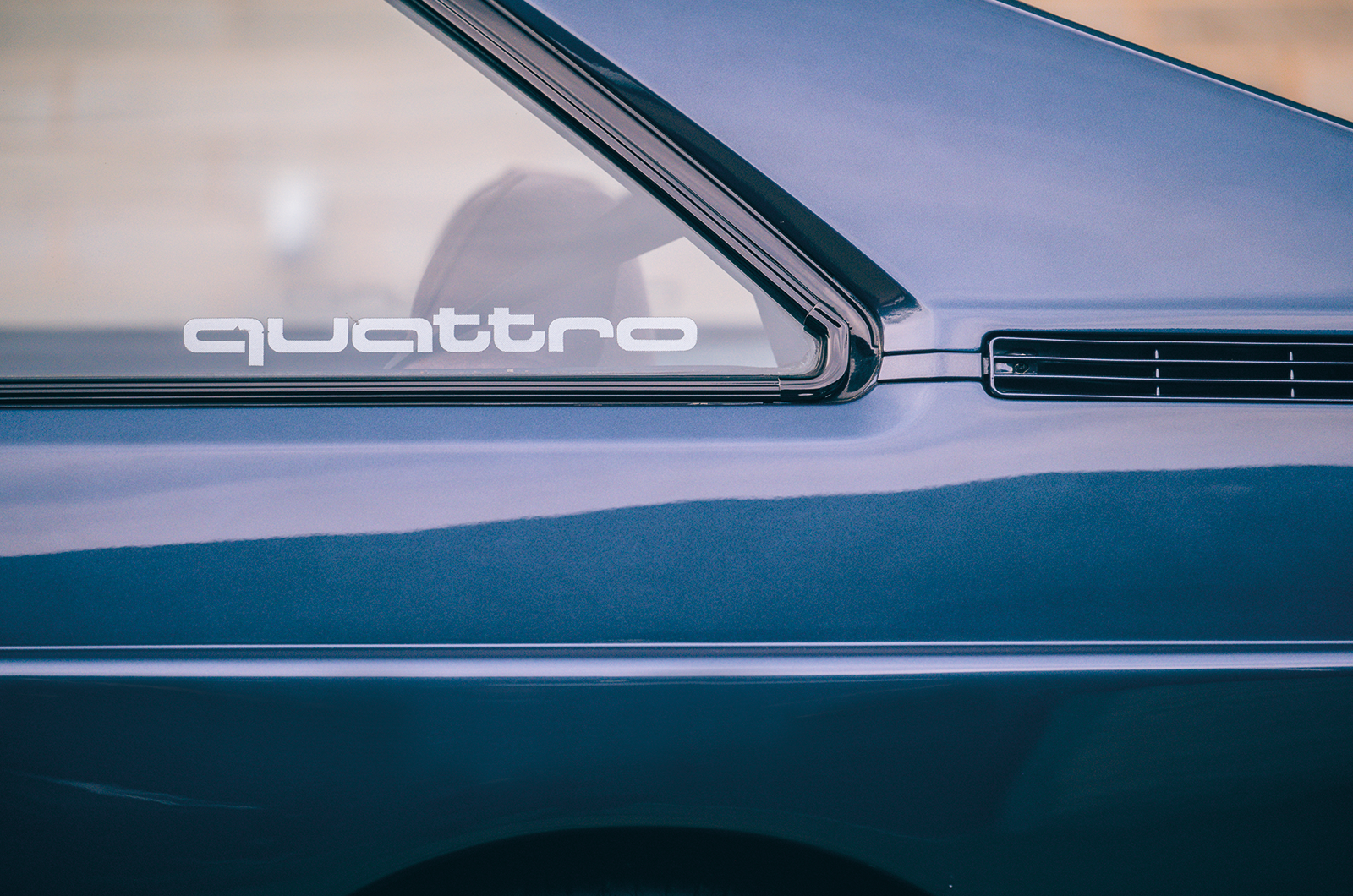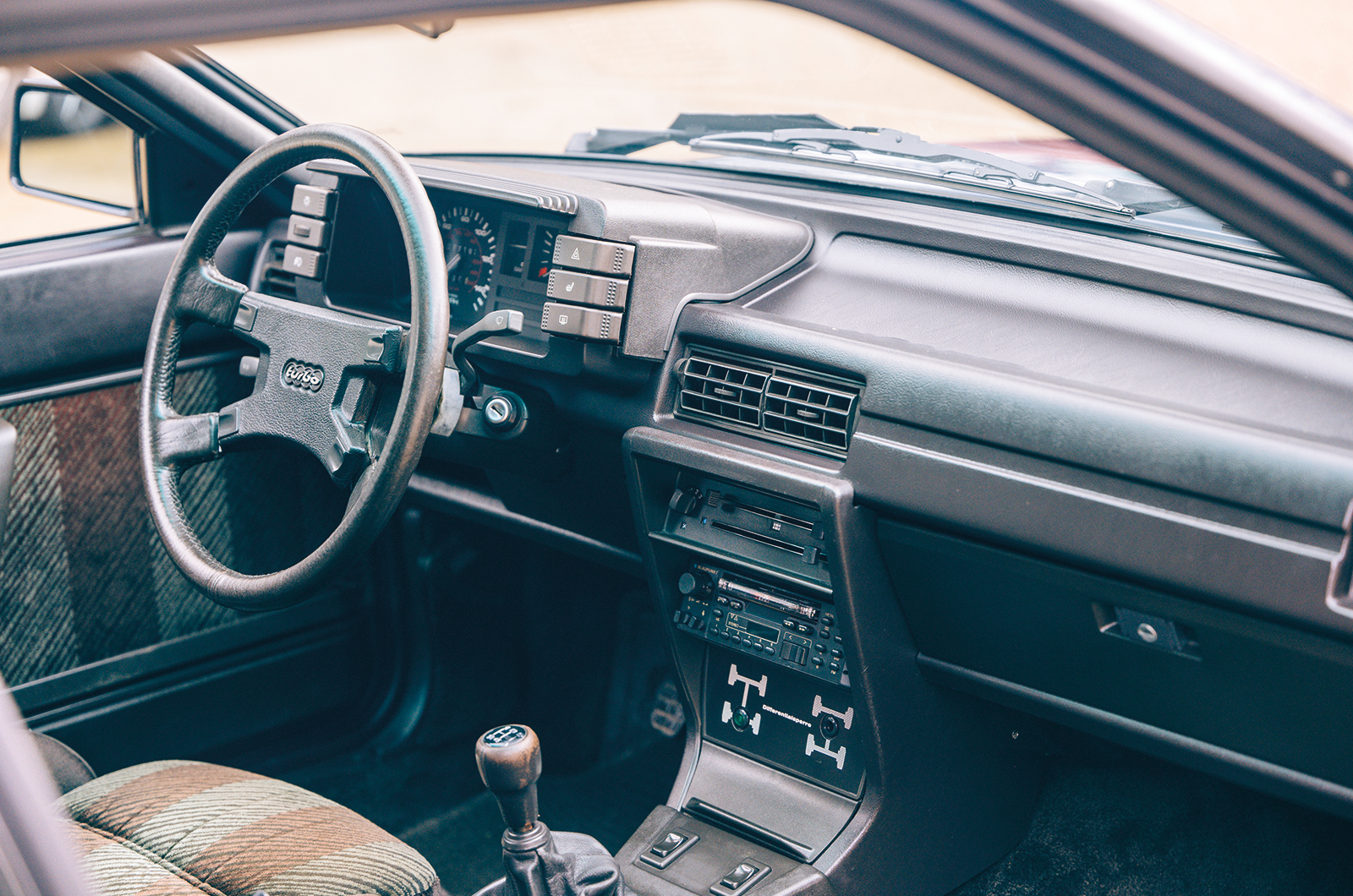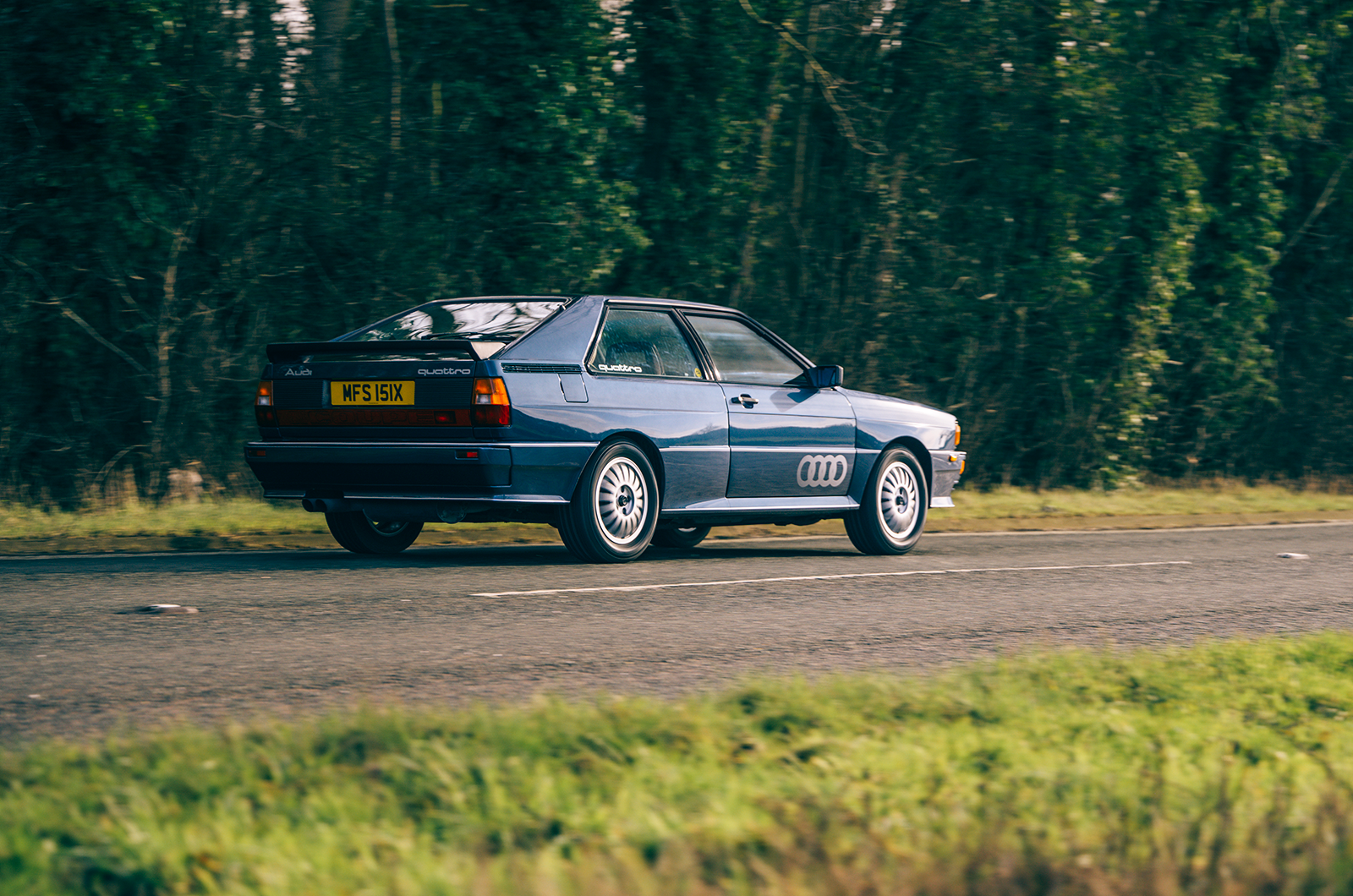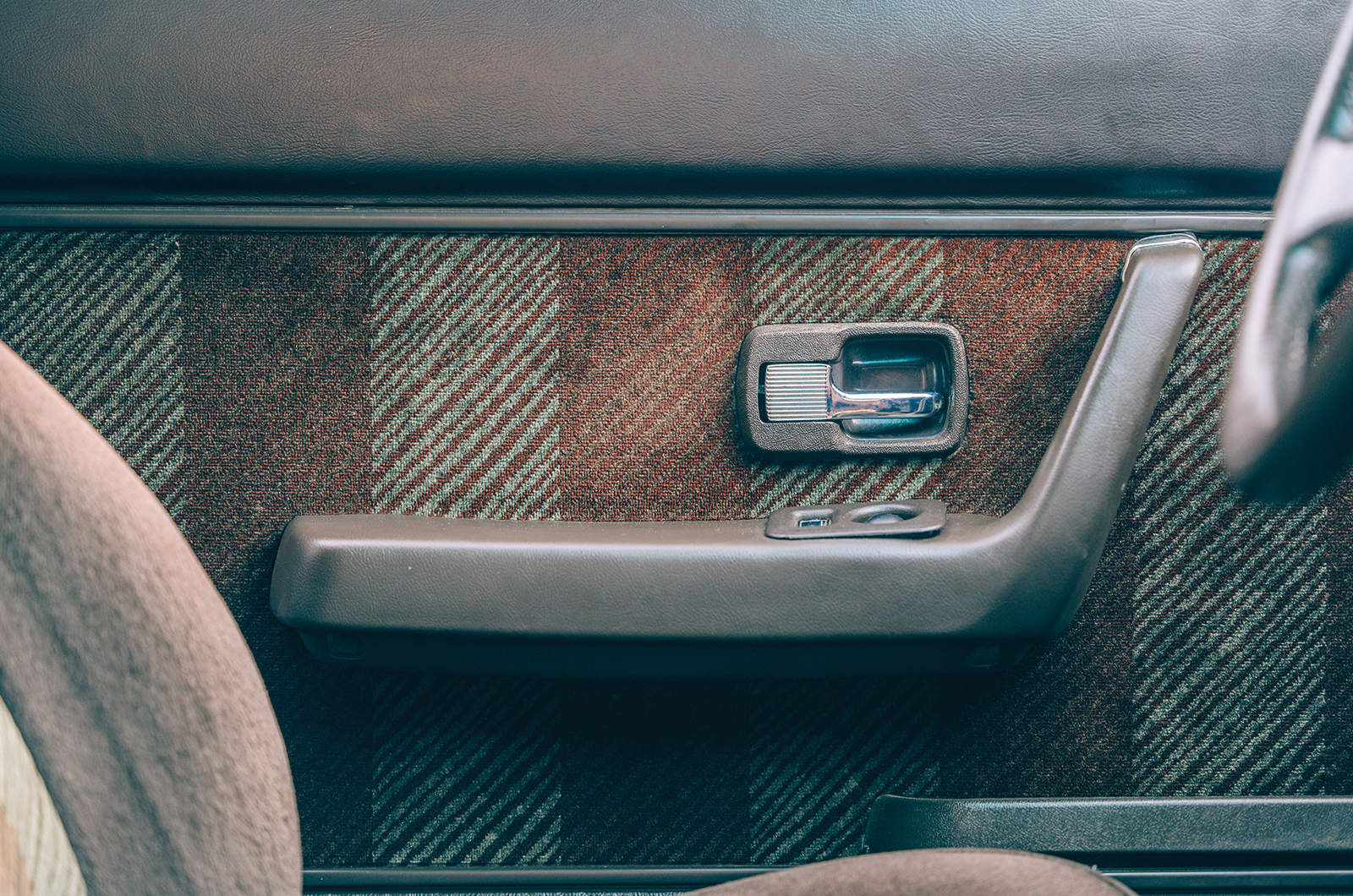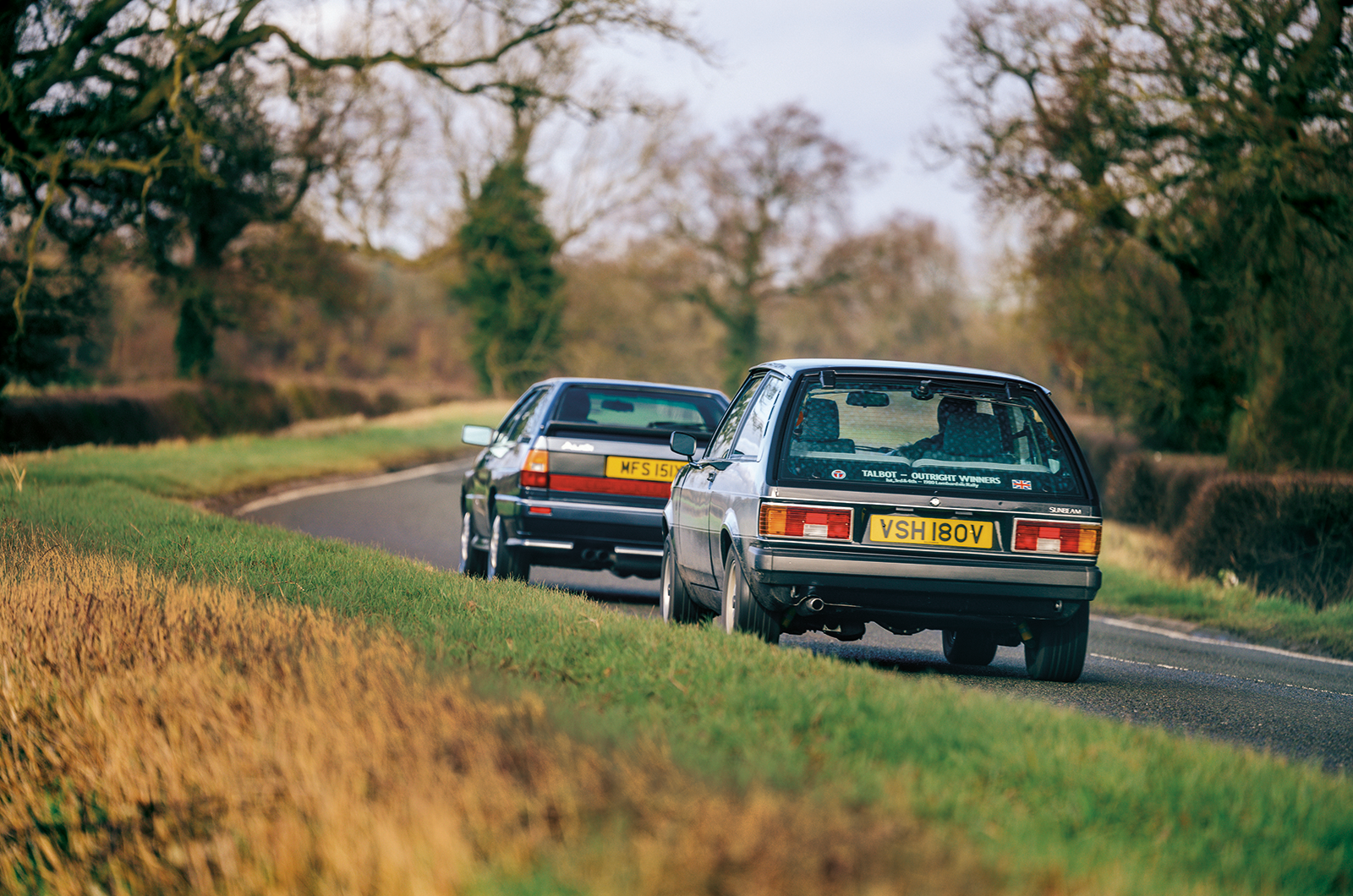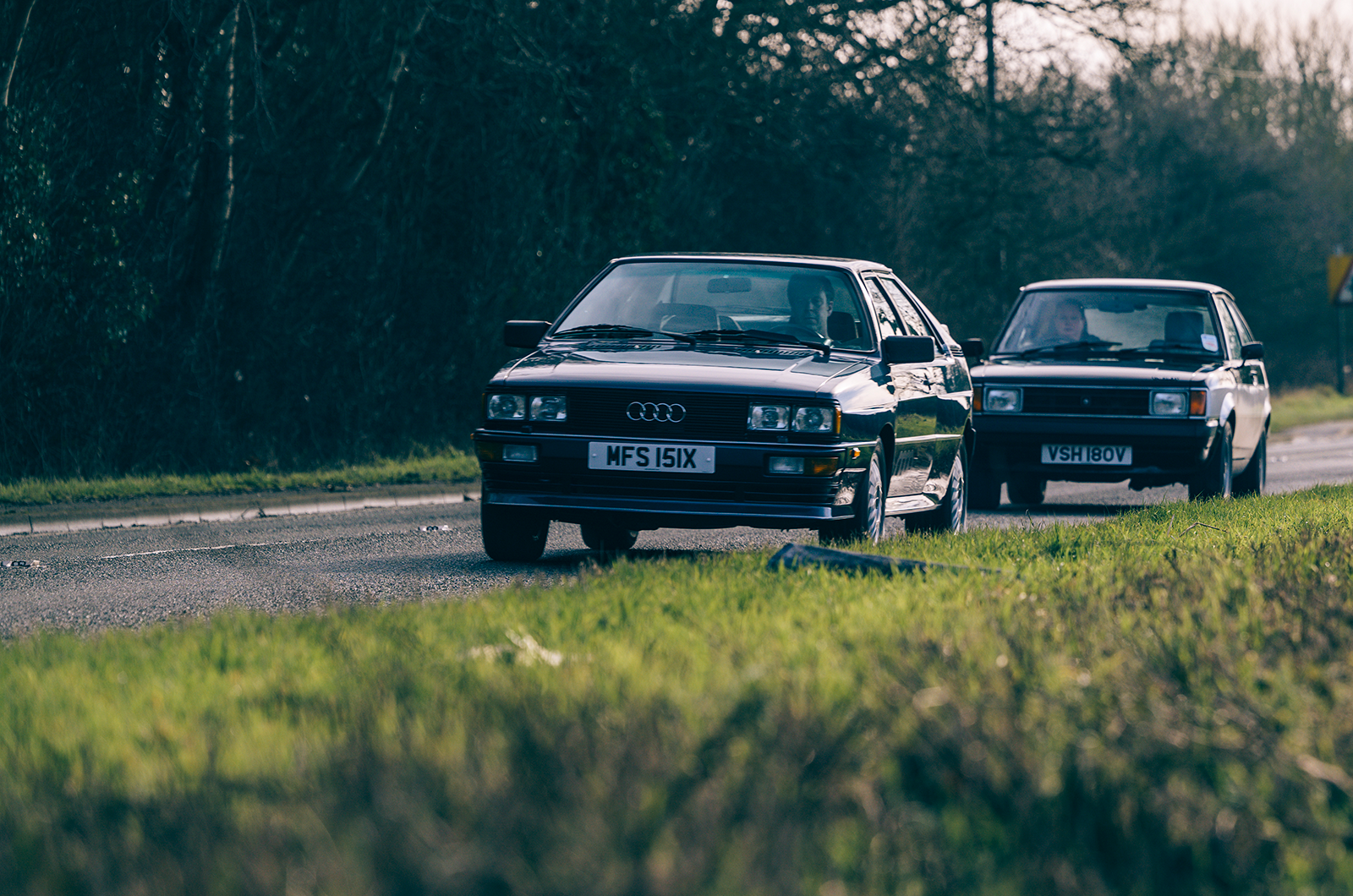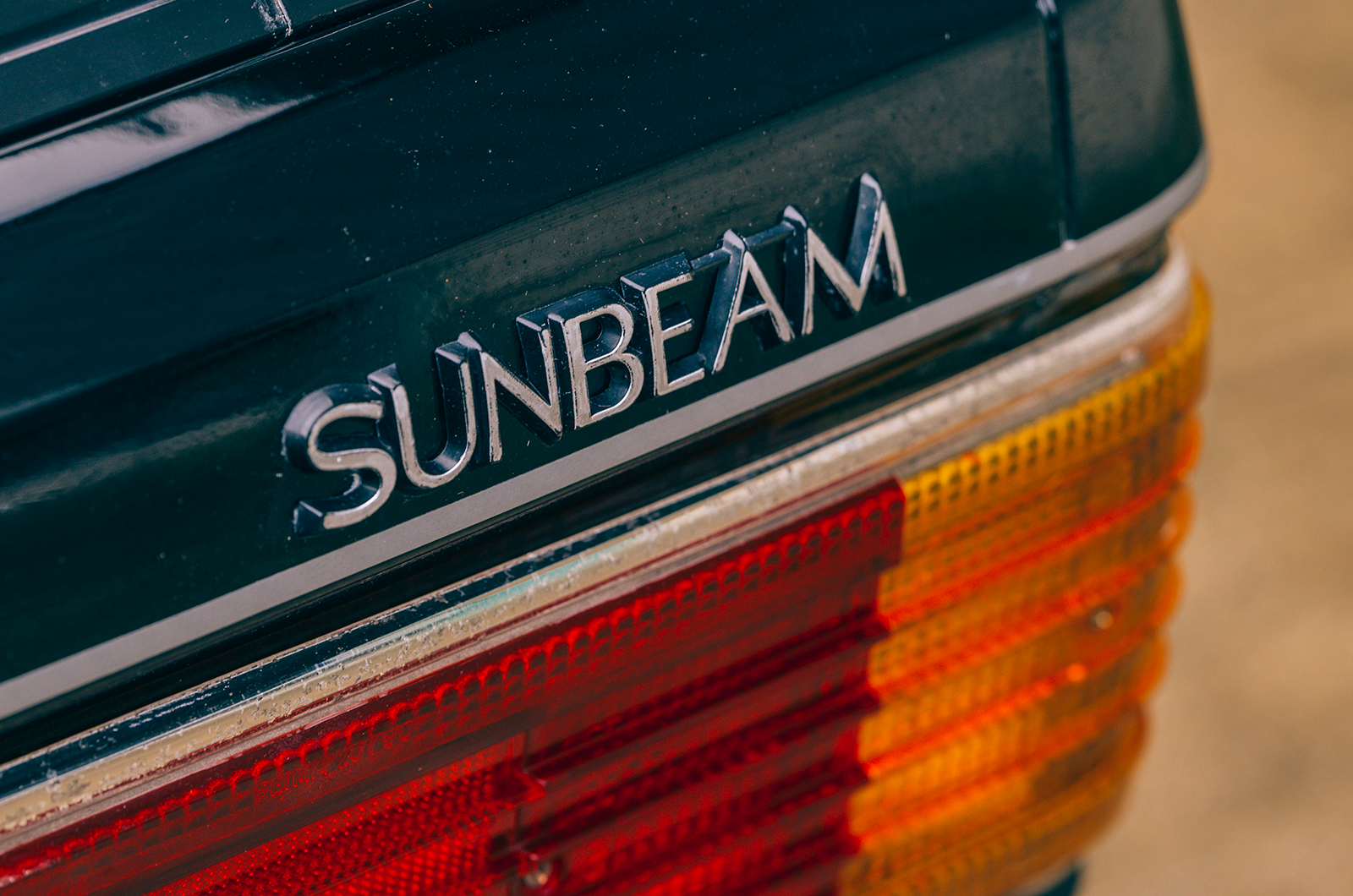If the Sunbeam interior gives a glimpse of 1970s British austerity, the quattro oozes ’80s excess.
Open the door and it is so much more luxurious, modern and substantial-feeling – as you’d hope of a machine that retailed at £14,500, double the price of the Sunbeam… and any other Audi for that matter.
Upholstery on the seats and doorcards could double as a velour tracksuit and the driving position is far more comfortable and sporting than the Sunbeam’s.
You sit lower on plush seats that are canted back slightly, leaving your knees a little higher than your backside. And while the bolsters are supportive, you sink comfortably into the forgiving centres, too.
The earliest Audi quattros were all left-hand drive, regardless of market
Both the advanced mechanical specification and high level of equipment are showcased: there’s a ‘turbo’ insignia on the leather-wrapped steering wheel, a graphic ahead of the gearstick to illustrate when the centre or rear diffs are locked (activated by tugging knobs below the handbrake), plus there are electric windows, a digital cassette radio, and even toasty heated seats
Being 174mm longer than the Talbot, this is a far more spacious car, too.
The quattro feels the heavier, more cushioned and more relaxing machine to potter about in, its air of detachment underlined by leisurely steering and slightly ponderous gearshifts that crunch as they slot home.
But it offers clear advantages over the Sunbeam, notably in putting down its power so cleanly, even if you lay into the throttle in slippery conditions, and by riding less skittishly and stopping more promptly.
The Audi’s 10v five-pot is a third more powerful than the Lotus Type 911 twin-cam
While throttle response is dulled by forced induction, there’s a lovely phlegmy gurgle from the five-cylinder engine and a strong surge of acceleration when the boost eventually does kick in at around 3000rpm, though it is unpleasantly gritty at high revs.
At this stage, the five-cylinder engine had a capacity of 2144cc and produced 197bhp at 5500rpm, and while that sounds a useful gain over the Sunbeam, it’s entirely neutralised by the quattro’s 1290kg bulk – the little Lotus easily keeps pace in a straight line.
There’s no question that the immediacy and excitement of the Sunbeam are lacking in the Audi – the twitchiness replaced by neutrality and understeer through these greasy twists and turns, thanks to both the all-wheel drive and the entire engine sitting ahead of the front axle line.
That’s quite a feat given it’s longitudinally mounted with five cylinders – fully 60% of this car’s mass is biased towards the front.
That now unmistakable Audi quattro shape
Hannu Mikkola, ’83 World Rally Champion, helped develop the competition car, and got his first experience with a drive in the road car in 1979.
“There was only one prototype, and I was quite negative about it at first,” he told me. “The quattro was large compared with the Escort… and the first engines were quite terrible with nothing under 4000rpm.
“It took us six or seven months to get the car going round bends precisely. We tried it with a limited-slip differential in the front but it was too nervous, so it was my idea to try a Ferguson open front diff, which was smoother and worked better.
“Things developed quickly – Piëch used to say he would get answers from Audi Sport in half the time it would take the road car divisions.”
The Audi quattro’s striped interior trim adds a welcome dash of colour to the cabin
The first sign that the quattro would transform rallying for ever came when Mikkola made a guest appearance at a 1980 Portuguese rally and finished 30 minutes clear of the rear-drive opposition, no matter that he was at that stage ineligible for points.
Early mistakes from the team – assembled from Audi employees, not poached from expert rivals – were compounded by mechanical problems in 1981, but Audi won the manufacturers’ title in ’82 and ’84, while Mikkola took the drivers’ title in 1983, Stig Blomqvist in ’84.
Along the way, quattro rally cars evolved from long-wheelbase Group 4 machines to the S1 E2 Group B cars with their wild wings and truncated wheelbases.
Visually the two are similar but very different at the same time, one born of huge investment, the other not…
The road cars evolved, too, and the truth is I’ve driven sharper-feeling examples than this.
The last was a 1988 model year: its steering felt more precise and the handling more incisive. The engine was also stronger, and by that time capacity had increased to 2226cc, a smaller and faster-spooling turbo was fitted and the delivery was smoother, even if performance remained the same.
There was also a new Torsen centre diff to replace ‘our’ car’s manual centre diff lock, which could put up to 75% of torque to the rear.
Two-wheel drive toppled four-wheel drive at the highest level of rallying
I drove that car for two days around a wintry Garmisch-Partenkirchen in Bavaria, convinced that it was the ultimate everyday classic.
It had grip and performance, distinctive looks and soundtrack, and a compelling blend of practicality and mod-cons.
No doubt the 20-valve models sold from 1989 until the end of production would be more desirable still. Ultimately, the quattro would live through to 1991 and sell more than 11,500 units.
The quattro dominates the road more than the comparatively slim Sunbeam
And while Audi’s short rally history ended with the demise of Group B in 1986, the Group A category that replaced it was filled with four-wheel drive and turbocharged machines such as the Lancia Delta Integrale, Ford Escort RS Cosworth and Toyota Celica GT-Four.
None of them would have existed had the quattro not left the Sunbeam and its rear-drive contemporaries for dead a decade before.
Images: Olgun Kordal
Thanks to Tolman Motorsport; Audi UK
Factfiles
Talbot Sunbeam Lotus
- Sold/number built 1979-’81/2308
- Construction steel monocoque
- Engine all-alloy, dohc 2174cc 16v slant-four, two Dell’Orto DHLA 45E twin-choke carbs
- Max power 150bhp @ 5750rpm
- Max torque 150lb ft @ 4500rpm
- Transmission ZF five-speed manual, RWD
- Suspension: front independent, by MacPherson struts, anti-roll bar rear live axle, trailing arms, coil springs, telescopic dampers
- Steering rack and pinion
- Brakes discs/drums
- Length 12ft 5in (3830mm)
- Width 5ft 3in (1603mm)
- Height 4ft 6in (1405mm)
- Wheelbase 7ft 9in (2413mm)
- Weight 2116lb (960kg)
- 0-60mph 6.6 secs
- Top speed 122mph
- Mpg 30.1
- Price new £7130
- Price now £25k*
Audi Ur-quattro
- Sold/number built 1980-’91/11,452
- Construction steel monocoque
- Engine iron-block, alloy-head, sohc 2144cc 10v ‘five’, Bosch K-Jetronic fuel injection and KKK turbocharger with intercooler
- Max power 197bhp @ 5500rpm
- Max torque 210lb ft @ 3500rpm
- Transmission five-speed manual, integral centre diff, 4WD
- Suspension MacPherson struts, anti-roll bars (front only from 1982)
- Steering power-assisted rack and pinion
- Brakes discs, with servo
- Length 14ft 5¼in (4404mm)
- Width 5ft 7¾in (1780mm)
- Height 4ft 5in (1346mm)
- Wheelbase 8ft 3¼in (2524mm)
- Weight 2844lb (1290kg)
- 0-60mph 6.5 secs
- Top speed 138mph
- Mpg 19.9
- Price new £24,204
- Price now £25-50,000*
*Prices correct at date of original publication
READ MORE
Four by phwoar: Audi quattro vs Lancia Delta Integrale
Flat-out in a unique rally Range Rover
Quattro power: how Audi's turbo 4x4 changed motoring forever
Your classic: Audi quattro
Ben Barry
Ben Barry is a contributor to Classic & Sports Car
